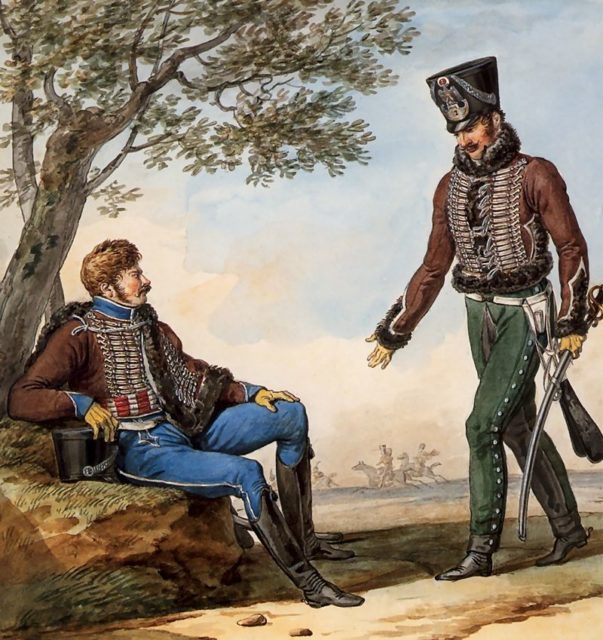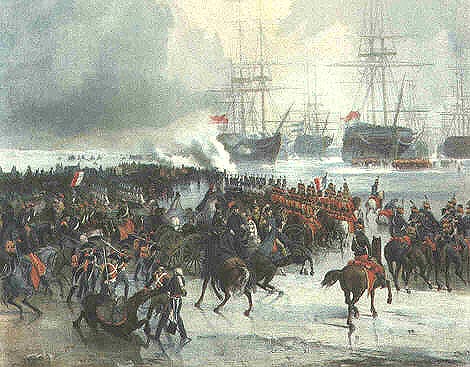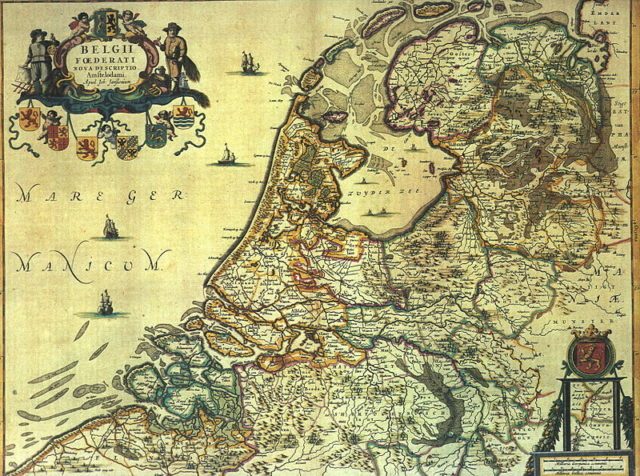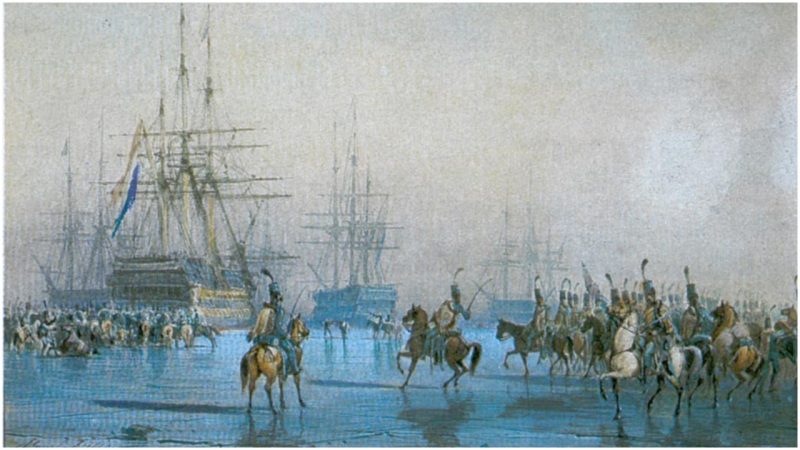There have been some anomalous winters in the past, when severe cold imposed harsh conditions. In such winters, waterways would easily freeze, and ice persist for months. Such was the exceptionally cold winter of 1795, without which we would not have had one of the weirdest moments in the history of war.
Which brings us to the French Revolutionary Wars, a string of confrontations that took place between the French and other European powers following the French Revolution. Most of the 1790s were marked by a series of extensive military conflicts. But there is one remarkable episode in which a French Hussar regiment went after the capture of a fleet of Dutch ships stuck in ice.
The event is noted as the Battle of Texel, but more accurately put, it should have been termed not a battle but the Capture of the Dutch Fleet at Den Helder. That was one of the rare instances, if not the only one in recorded history, when a cavalry troop managed to seize a navy fleet. In this instance, the French reportedly captured 14 Dutch vessels, among which were some merchant ships too, and they further claimed 850 cannon guns. This unfortunate date for the Dutch was January 23, 1795.
That winter was particularly harsh for Holland, and the 14 Dutch ships found themselves looking for shelter in an attempt to escape a storm that had them caught at sea. They were moving off the coast and into the North Sea, and eventually anchored off the Port of Den Helder, not very far from a small island called Texel. They could not have thought at this point that they would help Texel Island make a name for itself as a place where a navy was defeated by cavalry.

In the ongoing war, the French were largely involved in conflict with the Dutch. The old powers of Europe, the Dutch included, were afraid of what could come as a consequence of the French Revolution; they feared how the fundamentally changed French society would affect others. And rightly so, for there were many revolutionaries inside the Dutch Republic who supported the French Revolution and saw inspiration in the uprising against the monarchy and aristocracy.
The waters in which the Dutch fleet had anchored quickly froze, and the ships were trapped. But even if this had not happened to the fleet of 14, there wasn’t much that they could do to change the course of the war. By the night of January 23 of that year, France had oppressed most of the territory of Holland already.
The word of a Dutch fleet trapped in ice traveled fast, and it reached Jean-Charles Pichegru, the French general whose later involvement in a conspiracy to overthrow Napoleon led to his death in 1804. Pichegru would now pass the information to Admiral Johan Willem de Winter who, despite being Dutch, served the French side.
De Winter commanded his troops to move towards Texel and the currently frozen waterways and bays of his country. The assault on the Dutch fleet took place during night time. He sent his infantrymen on horses, with the feet of the animals supposedly coated with cloth to neutralize any noise.

According to David Blackmore, the Dutch navy men had been ready to strike, as he writes in his book Blunders and Disasters at Sea. However, the captains of the vessels allegedly did not order any fire, although all 14 ships were assembled at one place.
Regardless of the ice, such an attack would have been catastrophic enough for the French, who would have been able to enter combat properly only after climbing up the vessels with the help of ladders.
Information had reached the Dutch fleet that their government had been captured by the revolutionaries and they wanted to cease fighting, the Smithsonian writes. Bloodshed was indeed escaped, although it is not entirely clear how the entire episode precisely unfolded.

It may have been a quiet winter scene, in which there were no major human casualties (if there were casualties at all). The French considered the “assault” their victory, and they also saw it as a big accomplishment.
However, Dutch historians later would claim that the captains of the Dutch vessels had simply followed orders to not provoke a strike. They negotiated the handover of their ships to the French, after which the vessels became part of the French navy.
Although it was a horrible winter, it must have brought some joy to the French.
